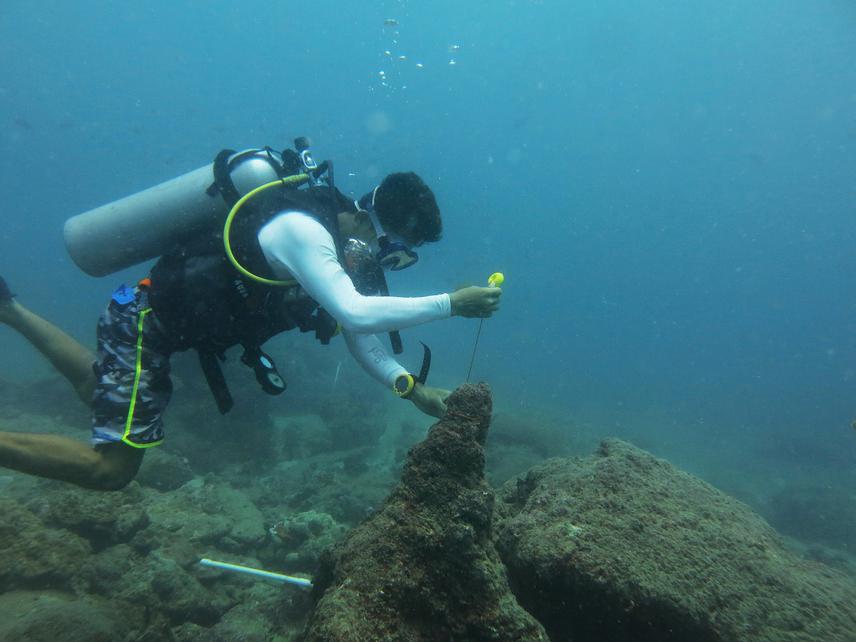Chetana B Purushotham
Understanding how seasonal exposure to sediments affects the recovery of fringing coastal reefs in the aftermath of mass bleaching.

Saw Darrick from DIVEIndia deploying a light data logger.
The Andaman Islands harbour some of the richest and most extensive coral reefs in India. These reefs provide the archipelago with coastline protection, sustenance for local communities and increasingly- large tourism and fishing sectors. Recent episodes of ocean warming (El Niño, 2010 – most severe) have however, led to mass die-out of its coral and extensive damage to the structure and function of these reefs. Subsequent recovery of coral reefs however, has been variable. Some reefs having not recovered as well or as rapidly as others. Earlier research in the Andaman Islands has shown that the extent of reef recovery is determined largely by the threats acting at much smaller scales; one in particular is the exposure to terrestrial sediments these reefs increasingly face. We expect these increases in the inflow of sediments from land can be linked to soil erosion from rapid deforestation and land-use change inland. Additionally, from reefs elsewhere in the world, we know their effects range from reduced coral growth to lowered survival, through light-loss, smothering and nutrient enrichment. Yet, systematic efforts to assess the nature and extent of their effects in Andaman reefs are lacking, despite recovery being crucial to restoring ecosystem services and economic benefits these reefs provide.
In this study, we evaluate the effects of terrestrial sediments on coral recovery, first by quantifying sediment load, then examining the coral communities, for structural and functional traits that may act as indicators of the nature and extent of the sediment stress. Specifically, we aim to identify the major point sources of sediments into reefs, the spatial and temporal scales of their impact. The study will be conducted in the Mahatma Gandhi Marine National Park in South Andamans over a period of one year, covering the monsoon, post-monsoon and summer seasons. Using our measures of sediment stress and indicators as a baseline, we will design a protocol for continued assessment of these reefs that can be replicated at larger scales. In doing so we hope to provide a start point to monitor and manage its impacts on long-term coral reef survival, particularly in combination with resource exploitation, land-use change and increasing tourism, imminent in the Andaman Islands.